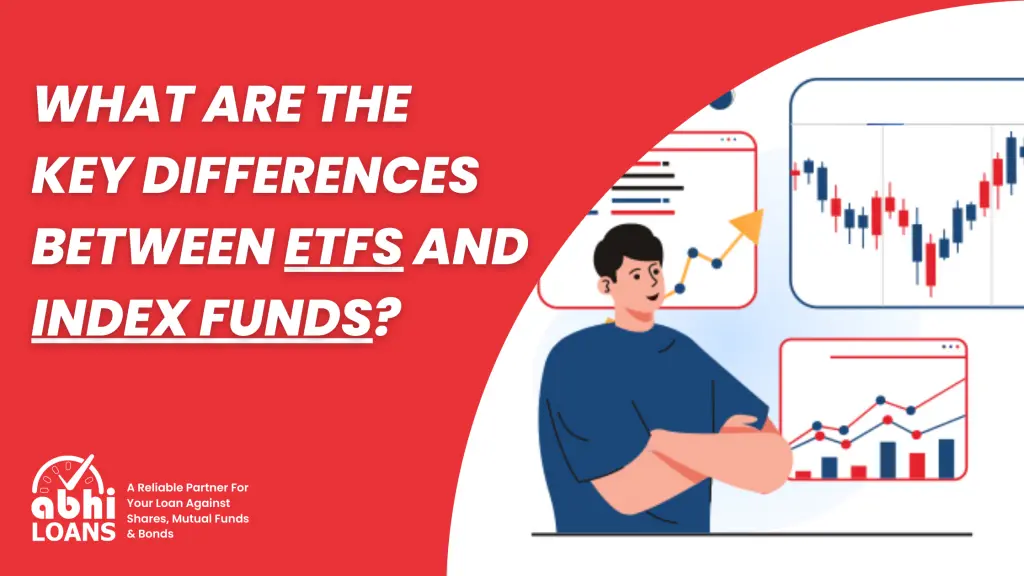What are the Key Differences Between ETFs and Index Funds?
When it comes to investing, two popular options that often come up in discussions are Exchange-Traded Funds (ETFs) and index funds. These two investment vehicles share similarities but also have key differences that can impact your investment strategy. In this guide, we’ll explore the nuances of ETFs and index funds, highlighting their unique characteristics and helping you understand which might be a better fit for your investment goals.
Understanding ETFs and Index Funds
ETFs and Index Funds are both popular investment options that offer diversified exposure to a basket of securities, such as stocks or bonds. Here’s a brief overview of each funds:
ETFs
Think of ETFs as a blend of stocks and mutual funds. They’re traded on stock exchanges, just like stocks, and hold a collection of assets, such as stocks, bonds, or commodities. ETFs aim to replicate the performance of a specific index or asset class.
One of the key advantages of ETFs is their flexibility—you can buy and sell them throughout the trading day at market prices. Moreover, ETFs often come with lower expense ratios compared to actively managed mutual funds, making them cost-effective options for investors looking to minimize fees while maintaining diversified exposure to various markets.
Additionally, the transparency of ETF holdings allows investors to see the assets they own within the fund, promoting greater clarity and understanding of their investment portfolios. Overall, the combination of liquidity, cost-efficiency, and transparency makes ETFs a compelling choice for many investors seeking broad market exposure with added flexibility.
Index Funds
Index funds, on the other hand, are a type of mutual fund. They are designed to mirror the performance of a specific market index, like the S&P 500. Unlike ETFs, which are traded on exchanges, index funds are bought and sold at the end of the trading day at their net asset value (NAV). Index funds are known for their passive management style and low costs compared to actively managed funds.
Furthermore, index funds offer investors a straightforward approach to investing in broad market segments without the need for frequent monitoring or portfolio adjustments. Their hands-off nature makes them particularly appealing for long-term investors seeking steady, low-maintenance growth in line with overall market trends.
Additionally, index funds often boast favorable tax efficiency due to lower turnover rates compared to actively managed funds, potentially reducing the tax burden on investors over time. Overall, index funds represent a reliable and cost-effective option for individuals looking to achieve diversified exposure to the market while keeping expenses and effort to a minimum.
Key Differences Between ETFs and Index Funds
- Trading: ETFs are traded throughout the trading day at market prices, while index funds are traded at the end of the day at their NAV.
- Minimum Investment: ETFs generally have lower minimum investment requirements compared to index funds, making them more accessible to a wider range of investors.
- Costs: ETFs may have lower expense ratios than index funds, but investors may incur trading costs, such as brokerage commissions. Index funds typically do not have these additional trading costs.
- Tax Efficiency: ETFs are usually more tax-efficient than index funds because of their unique structure, which can minimize capital gains distributions.
- Flexibility: ETFs offer more trading flexibility than index funds, as they can be bought and sold throughout the trading day.
Which One Should You Choose?
The choice between ETFs and index funds depends on your investment goals, risk tolerance, and preferences. Here are some factors to consider:
- Trading Frequency: If you prefer to trade more frequently and take advantage of intraday price movements, ETFs may be more suitable.
- Cost Considerations: If you’re looking for a low-cost investment option and are comfortable with end-of-day trading, index funds could be a better choice.
- Tax Efficiency: If you’re concerned about taxes and want to minimize capital gains distributions, ETFs might be more tax-efficient.
Conclusion
Both ETFs and index funds offer investors a cost-effective way to gain exposure to a diversified portfolio of securities. The key differences lie in their trading method, minimum investment requirements, costs, tax efficiency, and flexibility. Understanding these differences can help you make an informed decision based on your investment objectives and preferences.
FAQs
Q: Can I invest in both ETFs and index funds?
Yes, you can invest in both ETFs and index funds to diversify your investment portfolio.
Q: Are ETFs riskier than index funds?
While both carry market risk, ETFs may be slightly riskier due to their intraday trading nature.
Q: Do ETFs pay dividends like index funds?
Yes, many ETFs pay dividends based on the dividends earned from the underlying securities, similar to index funds.
Q: Can I use ETFs and index funds in my retirement account?
Yes, both ETFs and index funds can be used in retirement accounts, such as IRAs and 401(k)s, to build a diversified retirement portfolio.
Q: What are some popular ETFs and index funds?
Popular ETFs include SPDR S&P 500 ETF (SPY) and Invesco QQQ Trust (QQQ). Some other popular index funds include Vanguard Total Stock Market Index Fund and Fidelity 500 Index Fund.

